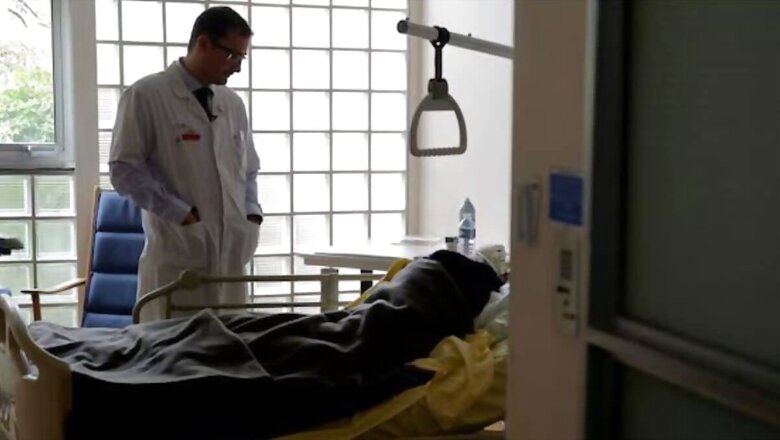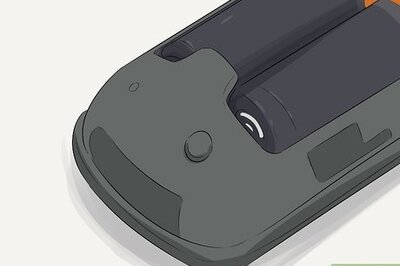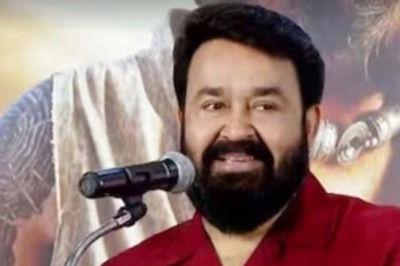
views
The government has recently issued guidelines for the withdrawal of life support in terminally ill patients. In India, active euthanasia, or aggressive mercy killing with the aid of doctors, is illegal. What is legal is passive euthanasia, or the withdrawal of life support systems in certified cases of terminally ill patients with no hope of recovery, given the current state of medical knowledge.
Aruna Shanbaug, a nurse, was raped and strangled by a ward boy in 1973. She remained in a vegetative or brain-dead state for 42 long years. In 2015, she died of pneumonia, oblivious to the decision pending from the medical committee after the Supreme Court’s approval for passive euthanasia. The futility of continuing life in a brain-dead state influenced the Apex Court’s decision to approve passive euthanasia. Passive euthanasia must be requested by a surrogate, a term encompassing the patient’s close family or loved ones, when the patient is unable to make decisions about life and death.
The futility of living while enduring excruciating physical and mental pain need not only dawn on the surrogates; it can also dawn on the patients themselves. This is where active euthanasia arises as an option for aggressive mercy killing, sought by suffering patients in a few countries such as the Netherlands, Spain, Belgium, Luxembourg, and Canada, among others. The deliverance is given by doctors, willy-nilly, through lethal injection or a similar method.
In the Hindu worldview, death itself is philosophically referred to as mukti. Aggressive euthanasia can be seen as a form of accelerated mukti when death eludes the afflicted patient. Both active and passive versions can be considered forms of suicide. In nations where active euthanasia is legal, suicide pacts between spouses who are in similar conditions are gaining acceptability within both the medical community and government circles. In India, pulling the plug, as passive euthanasia has come to be commonly described, now comes with elaborate safeguards in the light of the new guidelines.
The rationale for passive euthanasia is succinctly outlined in the backgrounder to the guidelines, which is reproduced below:
Many patients in the ICU are terminally ill, and not expected to benefit from life-sustaining treatments (LST) that include (but are not limited to) mechanical ventilation, vasopressors, dialysis, surgical procedures, transfusions, parenteral nutrition or Extracorporeal Membrane Oxygenation (ECMO). In such circumstances, LSTs are non-beneficial and increase avoidable burdens and suffering to patients and therefore, are considered excessive and inappropriate. Additionally, they increase emotional stress and economic hardship to the family and moral distress to professional caregivers. Withdrawal of LST in such patients is regarded as a standard of ICU care worldwide and upheld by several jurisdictions. Such decisions have medical, ethical and legal considerations.
The guidelines must be hailed for their comprehensiveness. They foresee the possibility of a patient proactively rejecting futile medical treatment by drafting an Advance Medical Directive (AMD), which is the health equivalent of a materialistic will, to be followed upon their death regarding their estate. The AMD can serve as a persuasive document for the surrogate to petition the hospital’s primary medical board, comprising three medical professionals who are required to reach a consensus. Subsequently, the matter is referred to the secondary medical board of the district, which must ratify or reject the primary board’s decision within 48 hours.
While technicalities have clearly influenced the makers of the guidelines, yathartham or pragmatism also plays a role in the discussion—particularly in terms of hospital and personal economics. The concept of distributive justice is mentioned in the guidelines, raising the question: shouldn’t the nation’s scarce medical and hospital resources be better utilised to care for those with a genuine chance and desire to live?
Surrogates may also have economic considerations in mind when petitioning the primary medical board. While their concern for the terminally ill relative may be genuine, it is sometimes difficult to discern their deeper motives. There could be a reluctance to continue incurring substantial hospital expenses, knowing full well that the outcome may be futile. Such hidden feelings could even mask more sinister intentions, such as hastening the execution of a will, which remains ineffective until the death of its author. However, the medical boards are bound to focus on clinical decisions and cannot concern themselves with the potential devious or criminal motives of the petitioners.
Having said all this, one must also play the devil’s advocate. The death sentence is anathema to pacifists, mainly because it is irreversible once someone is hanged. Similarly, euthanasia, in hindsight, could prove to be shortsighted if the medical world were to suddenly discover a cure for what was previously considered an incurable ailment.
For example, pulmonologists in India assert that when the lungs are functioning at suboptimal levels, death is imminent, and it may seem futile to bring the patient to the hospital repeatedly for oxygen. The unstated advice seems to be: let them die with dignity. Lung transplant success rates are not encouraging, even for those who can afford the procedure. However, if there were a significant medical breakthrough that guaranteed successful lung transplants, surrogates with the best intentions might regret having applied for passive euthanasia.
Be that as it may, the government might consider adopting a more liberal approach for terminal cancer patients and others by allowing the controlled consumption of mild narcotics, such as marijuana, solely to alleviate pain.
Arvind Kejriwal, the former Delhi Chief Minister, reportedly longed for insulin while in Tihar jail. Similarly, those enduring unbearable pain yearn for relief through painkillers like morphine or even marijuana. When such substances are made available, these patients can await death with dignity.
The writer is a senior columnist. He tweets @smurlidharan. Views expressed in the above piece are personal and solely those of the author. They do not necessarily reflect News18’s views.



















Comments
0 comment